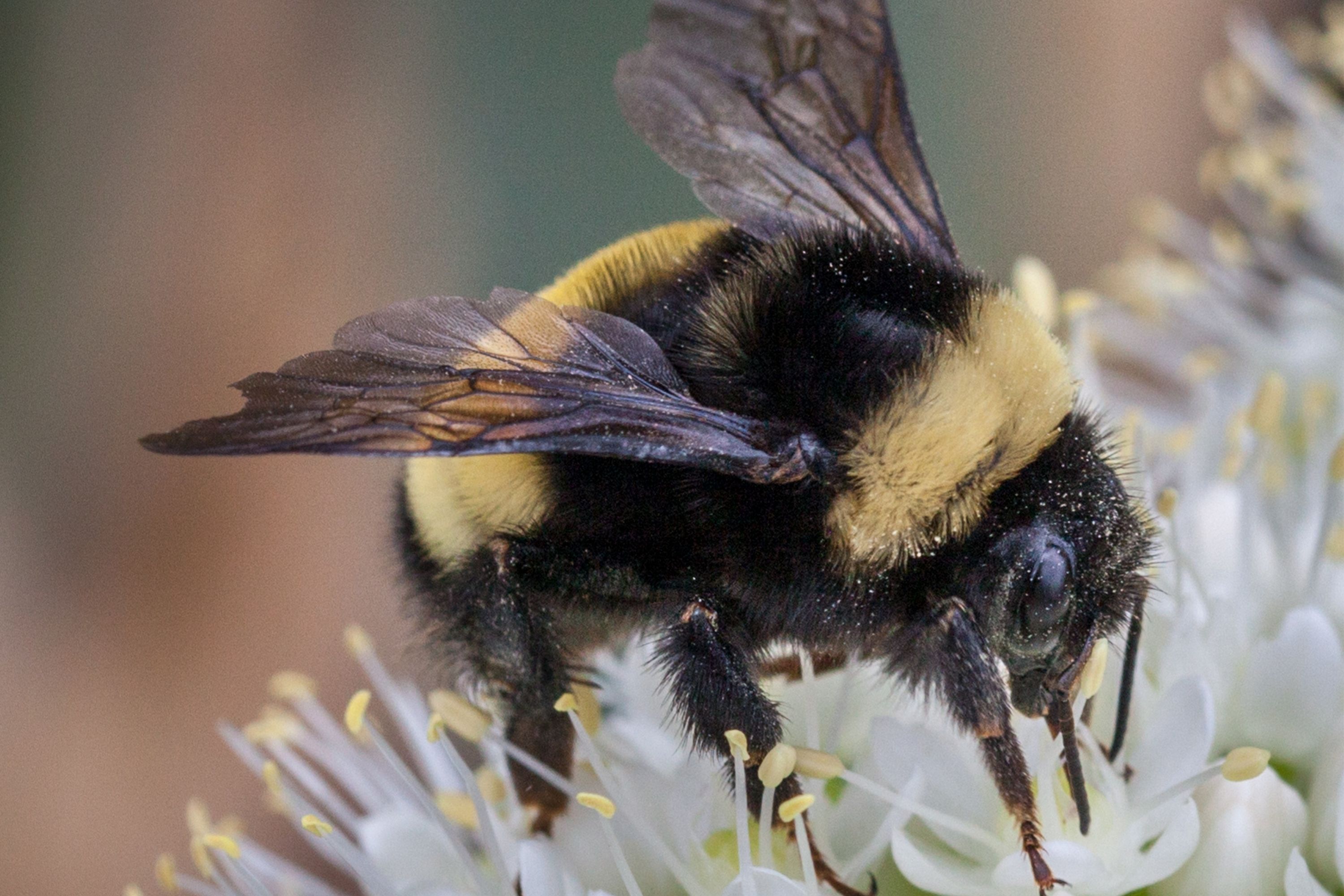Yellow-banded bumblebee
(Bombus terricola)

Description
Bombus terricola, the yellow-banded bumblebee, is a species of bee in the genus Bombus. It is native to southern Canada and the east and midwest of the United States. It possesses complex behavioral traits, such as the ability to adapt to a queenless nest, choose which flower to visit, and regulate its temperature to fly during cold weather. It was at one time a common species, but has declined in numbers since the late 1990s, likely due to urban development and parasite infection. It is a good pollinator of wild flowers and crops such as alfalfa, potatoes, raspberries, and cranberries. B. terricola belongs to the order Hymenoptera, which consists of ants, bees, wasps, and sawflies. B. terricola belongs to the family Apidae, which encompasses bumblebees, honey bees, stingless bees, and more. Within this, it is part of the genus Bombus, which consists of bumblebees. Kirby first defined this species in 1837. Bombus occidentalis has been speculated to be a subspecies of B. terricola, but most experts now agree that it is its own distinct species. B. terricola is also closely related to B. affinis both phylogenetically and in terms of pheromone signalling. Oftentimes, the B. terricola is so similar to B. affinis that members of B. affinis can invade and dominate entire B. terricola nests without the hosts knowing. The yellow-banded bumblebee is black and yellowish-tan, and has a characteristic fringe of short yellow-brown hairs on its fifth abdominal segment. The queen is about 18 mm (0.7 in) long. The front half of the thorax is yellowish-brown, as are segments 2, 3 and 4 and the sides of segment 6 of the abdomen. The other parts of the thorax and abdomen are black. The worker is similar in appearance to the queen but smaller at a length of 9 to 14 mm (0.35 to 0.55 in). The male is intermediate in size, being 13 to 17 mm (0.5 to 0.7 in) long. In the male, abdominal segments 2, 3, and 7 are yellowish-brown as are usually the sides of abdominal segment. Bombus terricola occupies the eastern and Midwestern parts of the United States as well as southern Canada. They are known to occupy a wide range of habitats including urban areas, meadows, grasslands, wetlands, woodlands, and farmlands. They can also occupy alpine meadows to lowland tropical forests.
Taxonomic tree:







